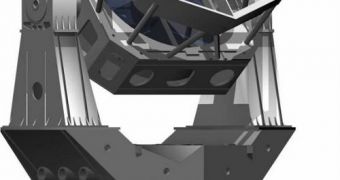Over the past couple of years or so, the threat of space junk and debris has been looming increasingly threatening above our planet, and astronomers have been growing equally as concerned about this. Now, an American agency is trying to set the foundations of a new monitoring network.
The US Defense Advanced Research Projects Agency (DARPA), a special division of the Pentagon, is currently deploying a number of small, wide-angle telescopes around the country. This will allow it to keep track of large numbers of micrometeorites, space junk and other nano- or micro-satellites.
Officials say that the new network's primary job will be to ensure that satellites supporting US military missions around the world do not fall victim to space collisions. However, the grid's functionality could conceivably be extended to commercial applications as well.
At this point, existing space surveillance methods only enable experts to keep track of small regions of orbit at any given time. Through the Space Surveillance Telescope (SST) program, DARPA hopes to boost that capability, and provide a much more comprehensive view of what's going on.
SST instruments have a very advanced design, officials say, and this allows them to produce a view of the entire sky in just a few nights, rather than a few weeks as is typically the norm.
Some telescopes even take months to do the same, says US Air Force (USAF) officer and DARPA SST program manager Lt. Col. Travis Blake, quoted by Space. “Currently we have a 'soda straw' view of deep space, where we can only see one narrow segment of space at a time,” he explains.
“The Space Surveillance Telescope should give us a much wider 'windshield' view of deep space objects, significantly enhancing our space situational awareness,” the official goes on to say.
The SST system uses curved charge coupled device (CCD) technologies, of roughly the same type used in conventional digital cameras. The entire observatory is built on a mount that can turn in all directions, making SST components some of the most agile in the world, given their size.
According to experts, the main goal of this effort is to gain the ability to detect very faint objects in space. Space junk that are less than one inch in diameter do not readily reflect too much light, yet they pose a tremendous threat to spacecraft and the International Space Station.
In 2011 alone, the orbital facility had to be taken off its orbit twice, on account of space collision hazards. Most other satellites in low-Earth orbit are threatened by space debris as well. The small shards of material can travel at speeds of tens of thousands of kilometers per hour.

 14 DAY TRIAL //
14 DAY TRIAL //